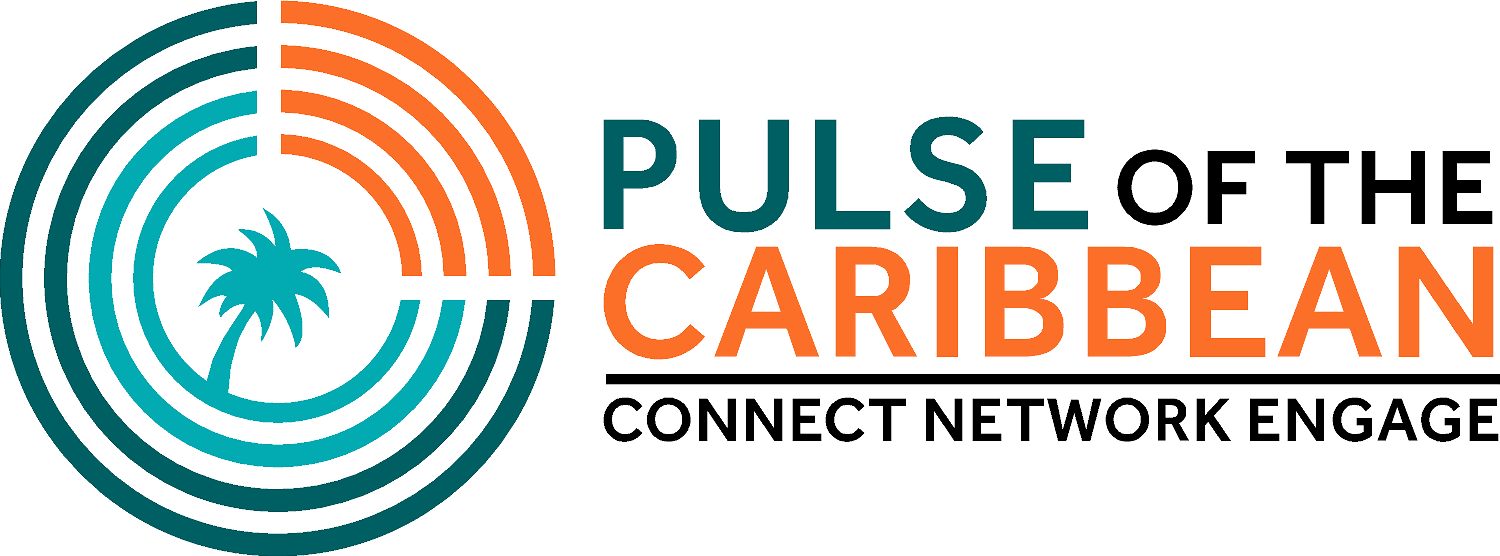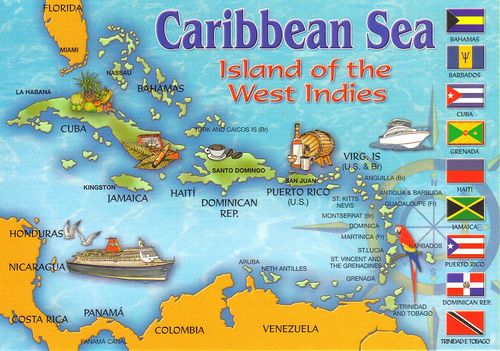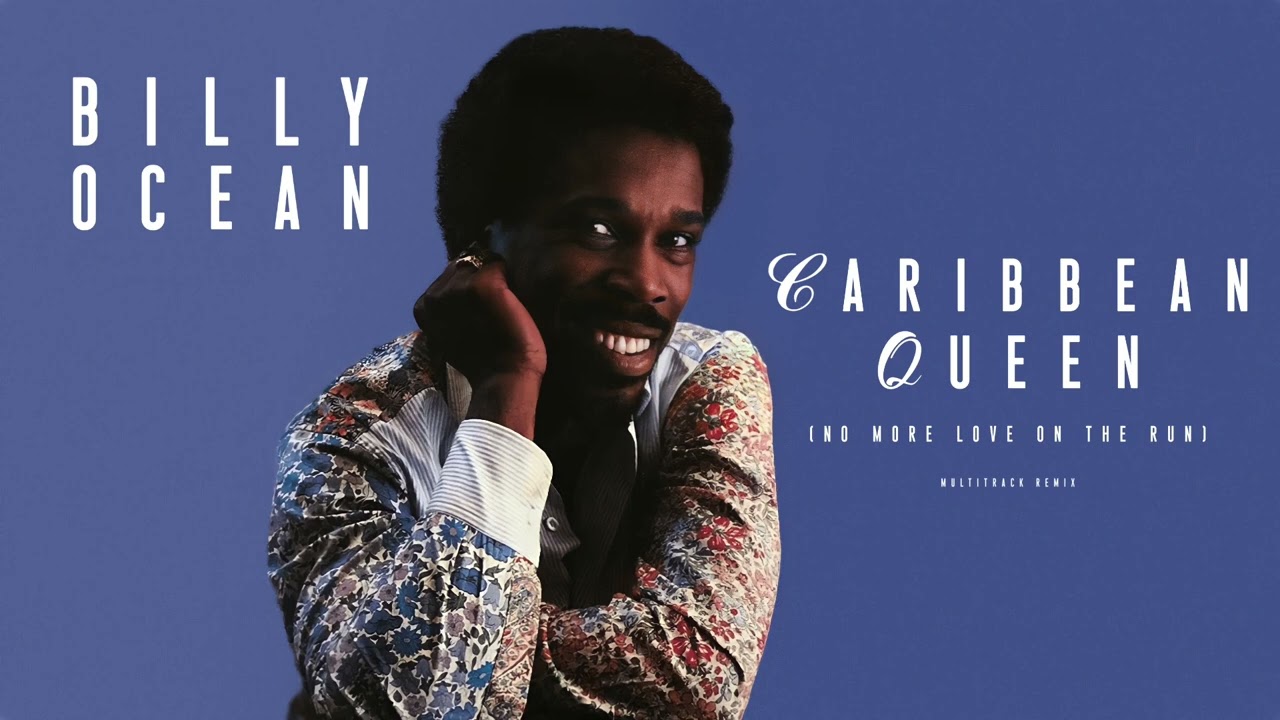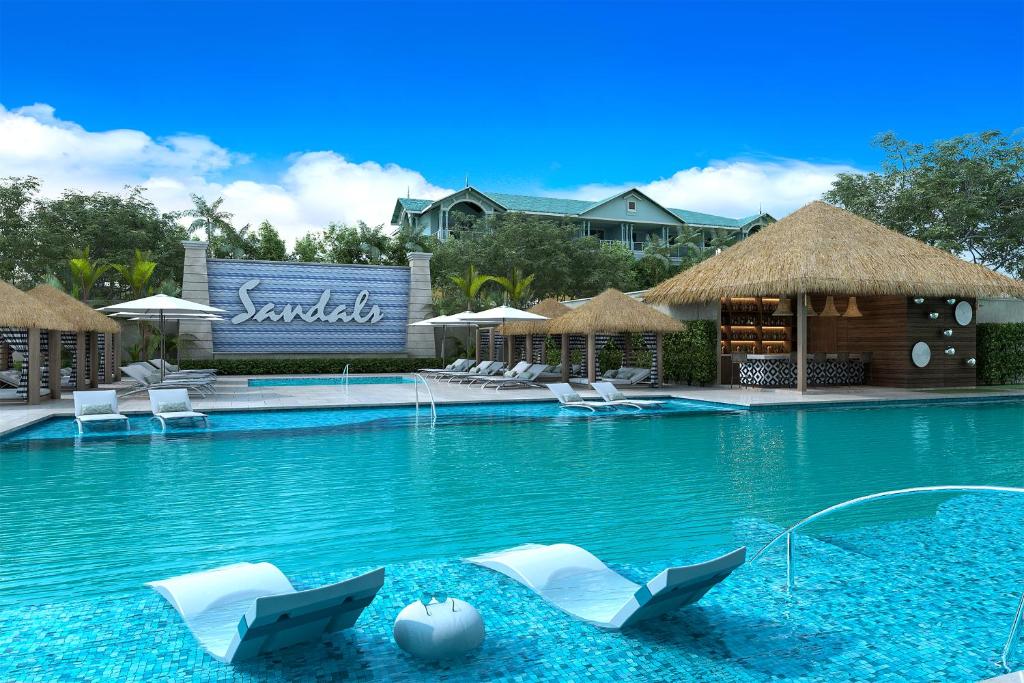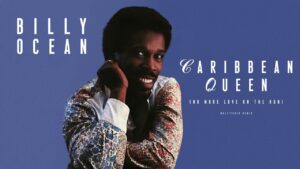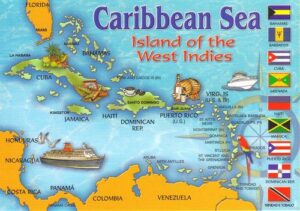The Caribbean Sea, located in the western Atlantic Ocean, located between latitudes 9° and 22° N and longitudes 89° and 60° W. The Caribbean Sea map shows that it covers approximately 1,063,000 square miles (2,753 000 square km). In the south, it is along the “Caribbean flags” of Venezuela, Colombia and Panama; to the west through Costa Rica, Nicaragua, Honduras, Guatemala, Belize and the Yucatán Peninsula in Mexico; on the north by the Greater Antilles Islands Cuba, Hispaniola, Jamaica and Puerto Rico; and on the east by the north-south chain of the Lesser Antilles, which consists of an island arc that stretches from the US Virgin Islands in the northeast to Trinidad, off the coast of Venezuela, in the southeast.
Within the scope of the Caribbean flags, Jamaica, located south of Cuba, is the largest of the many islands. Along with the Gulf of Mexico, the American Caribbean Sea is called the Mediterranean Sea because, like the Mediterranean Sea, it lies between two continents. However, neither in water nor in climate is the Caribbean similar to the Mediterranean. The preferred oceanographic term for the Caribbean is the Antilles-Caribbean Sea, which together with the Gulf of Mexico forms the Central American Sea. The best-known depth in the Caribbean is the Cayman Trench (Bartlett Deep) between Cuba and Jamaica, about 25,216 feet (7,686 meters) below sea level.
Interesting Facts about the Caribbean Sea
1. It is an important oil producing region.
Oil reserves are found in Venezuela, and the discovery of large oil fields in Guyana in 2015 makes this region a major oil exporter. There are also potential oil fields in other Caribbean flags just off the coast of Suriname. Oil exports can boost the struggling economies of these countries and the rest of the Caribbean.
2. Temperatures are around 81 F (27 C) year-round.
Forget the cold water and come swim in the warmest beaches in the world! The temperature does not go far from 81 F (27 C), although it can drop slightly at night.
3. Salinity is around 3.6% in the Caribbean Sea.
4. It includes more than 7,000 islands e.g., the US Virgin Islands.
That’s a lot of islands! Of course, not all of them will be lived. The Bahamas itself has about 700 islands. The largest island, measuring 109,884 square kilometers (42,426 square miles), is that of Cuba.
5. The Caribbean Sea is the deepest ocean in the world!
This fact is due to its average depth of 22,788 feet (6,946 meters). The only deep waters are the Pacific and Atlantic oceans, the Indian Ocean and the Southern Ocean. Its deepest point, the Cayman Trough, is 7,686 meters (25,220 feet) below sea level. Between Jamaica and the Cayman Islands, the Trough is one of the lowest places in the world.
6. It is home to unique plants and animals.
Due to its tropical climate, the Caribbean Sea has almost 13,000 species of plants. About 6,500 of them are endemic, meaning you won’t find them anywhere else in the world. There are at least 1,000 species of animals recorded in this water, including 90 species of mammals. Unfortunately, some of them, like the manatee, are now endangered.
7.The Caribbean Sea serves as a fishing ground for lobster and sardines, especially in the Yucatan Peninsula.
8. 9% of the world’s coral reefs are found in the Caribbean Sea.
This is a fact that helps attract tourists from all over the world to the Caribbean. The Mesoamerican Barrier Reef System, or the Great Maya Reef, is the second largest reef in the world, after the Great Barrier Reef of Australia. It is 600 kilometers (about 1000 miles) long. Rising temperatures in the Caribbean Sea in recent years have caused the main food source coral (microscopic plants) to die in alarming numbers.
In addition, the heat leads to coral bleaching and subsequent death. Human activities also threaten the coral reefs of the Caribbean Sea, such as coastal development, pollution and fishing. Many of the Caribbean’s coral reefs are threatened by these events, and one-tenth are in critical condition.
9. It takes its name from the local people.
The name “Caribbean” comes from the “Caribs”, a group of Americans who lived in the area when Europeans visited it in the 15th century. However, it is also called the “Sea of the Antilles” because of the Spanish name (Antillas) for the islands in the area. Also, some Europeans called it the “Mountain Sea” in the 16th century because it is located north of the Isthmus of Panama. They called the Pacific Ocean “South Sea” because it is under Panama.
10. The Caribbean Sea map shows that the Island is technically part of the Atlantic Ocean.
The Caribbean Sea is separated from the Atlantic Ocean by island arcs (Archipelagos forming an arc). Although it is technically part of the Atlantic Ocean, there is a large visible difference where the two waters meet. Although the Atlantic Ocean is an attractive “blue-blue”, the Caribbean Sea is a turquoise color. You can find the “meeting point” at the Glass Window Bridge in Eleuthera, one of the islands of the Bahamas. Waves from both sides make this bridge dangerous at times. The waves swept people and cars off the bridge into the sea.
11. The geological age of the Caribbean Sea is estimated to be between 160 and 180 million years old.
This is because it was formed by a vertical fault that separated the supercontinent called Pangea in the Mesozoic era.
Final Take Away
We have explored the map of the Caribbean Sea, discovering its countless islands and their unique charms. Each destination offers its distinct flavor, from the pulsating energy of Jamaica to the timeless elegance of Barbados, the tranquility of the Turks and Caicos Islands and more. The Caribbean caters to all tastes, ensuring every traveler finds their own slice of heaven. So, plan your trip to the Caribbean and let the wonders of this enchanting region unfold before your eyes. The Caribbean awaits, ready to welcome you with open arms, sun-kissed beaches, and endless possibilities. Bon voyage!
